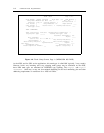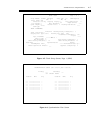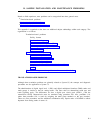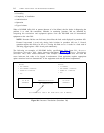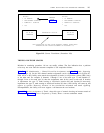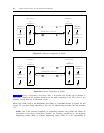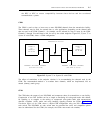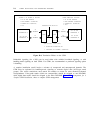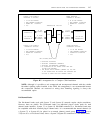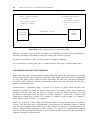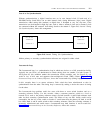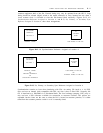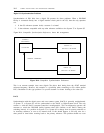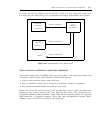
B-6
SAMPLE INSTALLATION AND MAINTENANCE PROBLEMS
SYSTEM 75 OR SYSTEM 85 OPTIONS:
OTHER ENDPOINT OPTIONS:
●
●
●
●
D4 OR ESF FRAMING
PER-CHANNEL SIGNALING
ROBBED-BIT SIGNALING
ZCS
●
●
●
●
D4 OR ESF FRAMING
PER-CHANNEL SIGNALING
ROBBED-BIT SIGNALING
ZCS
TRANSMISSION FACILITY
DS1 OR DMI
INTERFACE A
24
TRUNKS
24
TRUNKS
DS1 OR DMI
INTERFACE A
CEM
CEM
DS1 OR DMI
INTERFACE B
24
TRUNKS
24
TRUNKS
DS1 OR DMI
INTERFACE B
CEM OPTIONS: (BOTH ENDS)
●
●
BUNDLING SIGNALING OR
VARIABLE BIT-ROBBED SIGNALING
Figure B-6. Translation Effects on the CEM
Robbed-bit signaling (for a DS1) can be used either with variable bit-robbed signaling, or with
bundling-mode signaling on both CEMs. For CEMs, the recommended or preferred signaling option
is bundling.
A complex installation would involve a mixture of compressed and uncompressed channels. The
CEM must be optioned for bundling-mode signaling to transmit digital data (AVD-type trunk
groups). The switch translations must match one another to ensure an exact channel-to-channel
correspondence. Voice-grade trunks (which are compressible) should be assigned to one DS1/DMI,
while digital data trunks should be assigned to the other DS1/DMI. Figure B-7, Arrangement for a
Complex CEM Installation, shows a complex CEM arrangement.



